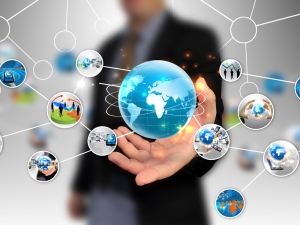
Hello everyone, this week in class we focused in on social Media, we looked at many elements but one caught my eye in particular, the idea of ” a second self”
This got me thinking during our class discussion, thinking about the user in social software and social media, from a designer’s perspective, and thinking about the user experience behind participating in these systems. Wondering, for example, how this all becomes “social.” Wondering how to integrate the fact that social media are in some respects anti-social. Or a-social. That the “social interaction” they engage is, at the end of the day, constructed from individual user experiences, from users blogging, posting, commenting to an audience they don’t see, and in some ways presenting a self that’s as much self image as it is some kind of true self. It’s strange, all of this. Here are just a few thoughts on the matter…
- Social media engage us, provide us with a means to express ourselves and to communicate with others. It is the potential for any contribution we make online to become communication (if it is picked up by another), that holds our principal

Photo credit: Soshable. interest in it. From My own experience, It is a fantastic way for companies to engage with their customers online in a fun approachable manner.
- When we don’t actually engage in a round of talk, through discussion posts, comments, or what have you, we’re aware at some level of an audience.Having this audience, as an audience of real friends, family members, and peers; and of those we will never meet, supposedly motivates us to continue participating.
- There is remarkable power in the possibility of communication, of recognition and acknowledgment by others. As there is also in the motivating power of an audience that reads, bookmarks, tags, andc licks much more than it actually comments substantially. We could call it the power of the social in its absence and distance.
Therefore does technology change culture?
Social attitudes have changed with the effect that citizens of a society now expect the various elements of that society to be better informed than previously. They also expect to be able to access more information about a specific product, service or organisation so that they can make informed decisions with regard to their interactions with that entity.
Research conducted by Pew Research Center states that at least 50% of social media users have shared a news-related story, image or video; and 46% of users discuss current events on their channels. Technology we now have at our fingertips, we are all becoming news reporters. Stories are being broken before the traditional media even get a chance to arrive at the scene. Look no further than the outbreak of Ebola for example.
How Culture and Technology Create One Another:
Ramesh Srinivasan, Associate Professor at UCLA in the Department of Information Studies, studies and participates in projects focused on how new media technologies impact political revolutions, economic development and poverty reduction.
When I was researching for this blog post I came across this very interesting TEDx talk by
Ramesh Srinivasan, He tells the story of how a friend from India, Living in a village by the cost. They use their Mobile phones to hunt crocodiles at night rather than using electricity for lights, I thought this was an interesting example of how technology has a positive effect on peoples lives
_________________________________
_________________________________________________________________
__________________________________________________________________________________________________
Thank you for taking the time to read this blog, please feel free to leave a comment, bye for now! 🙂